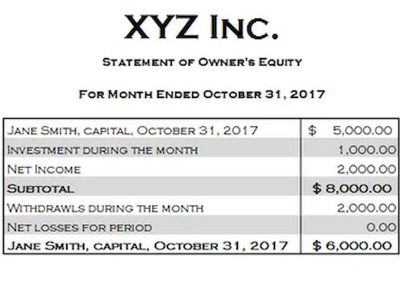What Is a Tax Write-Off?

You can also write off the employer cost of contributing to employee benefits, including medical insurance and retirement accounts. As a self-employed individual, you can claim the employer portion of your self-employment tax as a deduction. A write-off is an extreme version of a write-down, where the book value of an asset is reduced below its fair market value. For example, damaged equipment may be written down to a lower value if it is still partially usable, and debt may be written down if the borrower is only able to repay a portion of the loan value. In a write-down, an asset’s value may be impaired, but it is not totally eliminated from one’s accounting books. Financial institutions use write-off accounts when they have exhausted all methods of collection action.

That’s why we provide features like your Approval Odds and savings estimates. Just remember, if you pay a contractor $600 or more during the tax year, you’re required to send them a Form 1099-NEC by January 31st of the following year. Both methods require that you track your business miles for the year. You can keep a detailed log of your business miles, use an app to track your trips, or reconstruct a mileage log using other documents, such as calendars or appointment books. If you keep a mileage log, clearly document the miles driven, time and place, and business purpose of your trip. Be sure to keep documentation for the outing that includes the amount of each expense, the date and place of the meal, and the business relationship of the person you dined with.
Tax Write-Off Meaning: What Is a Business Write-Off?
The business simply credits the account, bringing its balance to $0, and generates an expense in the amount it took to pay it off. It can work similarly to how banks manage unpaid loans since a business is, in effect, financing the activities of its customers. To write something off in taxes means to claim a business expense on your end-of-year tax forms. The type of business expense you can deduct depends on the type of small business you run and what field you work in.
Self-employed business owners can also deduct health insurance premiums for themselves, their spouse, and dependents on Schedule 1 attached to their Form 1040. However, if you are eligible to participate in a plan through your spouse’s employer, then the business can’t deduct those premiums. You can deduct contributions to employee retirement accounts as a business expense. Check out the IRS’s tips for calculating your own retirement plan contribution and deduction for more information. You cannot deduct fees related to your personal bank accounts or credit cards. Joe is a self-employed writer and had $60,000 in self employment income in 2022.
Taxes and licenses
That shows up on its profit and loss statement during the period in which it takes the write-off as an added expense. As such, the write-off maneuver reduces taxable income for the business. Small businesses can usually write off the monthly or annual cost of using accounting software. Similarly, if you pay a CPA to file your business’ taxes, you can deduct that expense, but only for the business-related portion of your taxes (like filing a Schedule C form). You can’t deduct the money you spend on filing your personal taxes.
Your AGI is important because it is the starting point for calculating your tax bill and also the basis on which you might qualify for many deductions and credits. Those servicing student loans can claim deductions on the interest they pay. The IRS allows you to subtract interest paid on student loans you took out for yourself, a spouse, or dependent from your taxable income. You can claim tax deductions of up to $2,500 a year on student loan interest. However, payments on the principal aren’t tax-deductible, although some are pushing for it. Although bad debt and fixed asset write-offs aren’t the same as tax deductions, the loss of an asset or income does impact your taxes.
Tips for Writing Off Your Expenses and Charitable Contributions
A tax write-off is different from an accounting or business write-off, which refers to the process of removing an asset from your books when it loses value. For more in-depth information about COVID-19 tax relief, we recommend reading through the IRS’ Employee Retention Credit info page. Then, speak to a financial advisor to determine which credits and write-offs you may qualify for.
New Commerce program aims to incentivize equitable access to … – Washington State Department of Commerce
New Commerce program aims to incentivize equitable access to ….
Posted: Mon, 21 Aug 2023 15:42:09 GMT [source]
When the times comes for tax preparation, you should be familiar with the types of costs the IRS allows businesses to write off. Due to their ability to reduce taxable income, tax write-offs may play a part in everyday business decisions throughout the year. A tax write-off is taken when a business has an asset whose real value falls below the value it’s given on its books. The business will debit an expense account and credit the asset account to balance its books.
Health care expenses
But if you are like many small business owners and you use your car for both business and personal purposes, you must divide your expenses based on actual mileage for business use. It is important to remember that a tax deduction is not the same thing as an income tax credit. While both reduce your tax bill, that is essentially all they have in common.

Here are 20 popular tax breaks, an explainer of how tax deductions work, and links to our other content that will help you learn more. It’s important to understand that a write-off is a tax deduction, not a tax credit. When a business writes off expenses it lowers its taxable income and, as a result, the taxes it pays. This is not a dollar-for-dollar tax rebate and it only generates a refund if you paid more in estimated taxes than you owe at the end of the year. That said, write-offs can significantly lower a business’ taxes, making them very valuable for anyone who pays taxes on operating profits.
synonyms for tax write-off
Self-employed individuals who incur job-related educational costs may also take a deduction for tax purposes. The costs of providing health insurance for yourself and your employees can also be written off for tax purposes in most cases. Small businesses that provide health care may also be eligible for an additional tax credit. If you travel for work, you can write off a portion of the costs for tax purposes.
- Additionally, you may be entitled to write-offs on your state taxes, so check your state tax department’s website to see if you qualify.
- In other words you can get a tax benefit over time, rather than immediately.
- Then, speak to a financial advisor to determine which credits and write-offs you may qualify for.
- (An example might be a cell phone you use for business and personal use.) Generally, you cannot deduct personal, living, or family expenses.
For the 2022 tax year, this standard rate is 58.5 cents per mile. A business tax rate will then be applied to the $9,000 to Tax write off determine the amount of taxes owed. When renting office space, you can typically deduct the cost of rent from your taxes.
Generally Accepted Accounting Principles (GAAP) detail the accounting entries required for a write-off. The two most common business accounting methods for write-offs include the direct write-off method and the allowance method. The entries used will usually vary depending on each individual scenario. Three of the most common scenarios for business write-offs include unpaid bank loans, unpaid receivables, and losses on stored inventory. Generally accepted accounting principles (GAAP) detail the accounting entries required for a write-off.
(An example might be a cell phone you use for business and personal use.) Generally, you cannot deduct personal, living, or family expenses. But if you have an expense for something used partly for business and partly for personal purposes, you can divide the total cost between the business and personal use. Remember that business expenses that you write off must follow the ‘ordinary and necessary’ guidelines set by the IRS; the examples below are just examples and may or may not apply to your situation. Some people may be able to write off the personal property taxes that were charged and paid during the relevant tax year.

The difference between a write-off and a write-down is a matter of degree. Where a write-down is a partial reduction of an asset’s book value, a write-off indicates that an asset is no longer expected to produce any income. This is usually the case if an asset is so impaired that it is no longer productive or useful to the owners. If you’re a school teacher or other eligible educator, you can deduct up to $300 spent on classroom supplies in 2022. We believe everyone should be able to make financial decisions with confidence. If this is the only computer in your household you will need to calculate the percentage of time that you use the computer solely for business purposes.




